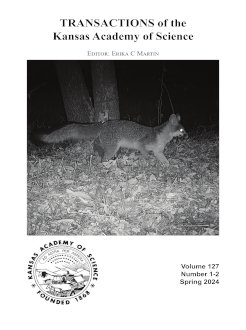Zooplankton abundance, community composition, and size can drive clear-water phases (CWPs) in temperate lakes. CWP events temporarily improve water transparency by decreasing algae, and thus better understanding the mechanisms of CWP events could lead to improvements in water quality. Here, we evaluate how zooplankton abundance, community composition (copepods, cladocerans), and size (only Daphnia) relate to CWPs in three Kansas reservoirs with different trophic states (i.e. mesotrophic, eutrophic, or hypereutrophic). Water transparency was measured using a Secchi disk, whereas zooplankton samples were collected with vertical net hauls throughout the water column, preserved with ethanol, and subsequently analyzed using a stereoscope. Results indicated that CWPs occurred in late Spring/early Summer in all reservoirs. Total zooplankton abundance increased with trophic state, with copepods typically dominating zooplankton communities (>70% of total abundance) in all reservoirs. Copepod abundance had relatively similar temporal trends and decreased with Secchi depth in all reservoirs. In contrast, cladoceran abundance and Daphnia length relations with Secchi depth were dependent on reservoir trophic state. Although cladocerans are widely reported drivers of water transparency, we only found links between abundance and CWPs in the mesotrophic reservoir, indicating that trophic state may alter zooplankton-CWP relationships. Therefore, water quality improvements via zooplankton driven CWPs may be different in relatively low and high trophic state reservoirs.
How to translate text using browser tools
11 June 2024
Trophic Status Alters Zooplankton-Driven Clear-Water Phases in Kansas Reservoirs
Luke Ungerer,
Ted Harris,
Javier Omar Morales,
Atefeh Hosseini
ACCESS THE FULL ARTICLE
cladocerans
copepods
Daphnia
Secchi depth
water transparency





